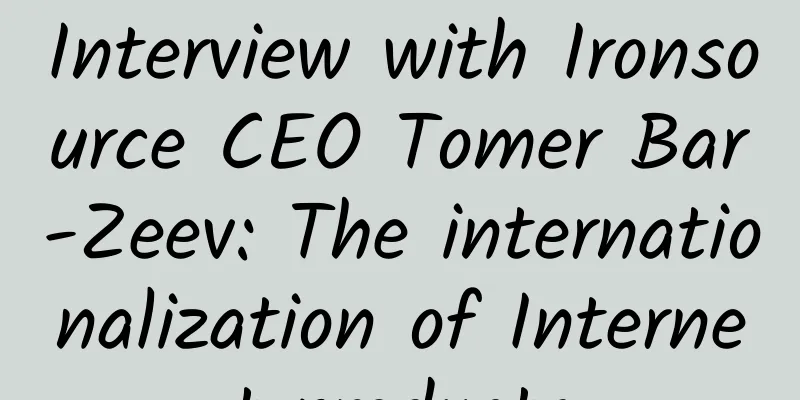Xia Xin's fall: Nothing lasts forever

|
A few days ago, I was reading the news and sorting out my daily newspaper as usual, and a piece of news came into my eyes: "Remember Xiaxin? Now 10,000 yuan can buy nearly half of its shares": At the end of July, 49.215% of the equity of Amoi Technology Co., Ltd. (hereinafter referred to as Amoi) was listed for transfer. The transferor was Sichuan Jiuzhou Chuang Co., Ltd. (hereinafter referred to as Jiuzhou Venture Capital), a wholly-owned subsidiary of Sichuan Jiuzhou Electric Group Co., Ltd. (hereinafter referred to as Jiuzhou Group). As new players continue to enter the domestic mobile phone market, a number of mobile phone manufacturers have gradually lost their vitality and withdrawn from the market. The sale of Xaxin's equity is another major event that has shocked the mobile phone industry this year, following the closure of Dakele and Bajia, and the layoffs of Tianyu and Phicomm. However, it is regrettable that seven years ago, Jiuzhou Group, together with several investors, bid 135 million yuan for the Xaomi brand and Xaomi mobile phone technology and development and other assets, but now the listing price of this 49.215% stake is only 10,000 yuan. 1 My thoughts go back to more than ten years ago, when there was a legend about Xia Xin in the history of domestic mobile phones. At that time, Amoi was still called Xiaxin. It was founded in 1981 and listed on the Shanghai Stock Exchange in 1997. It started out as a VCD and DVD manufacturer, then invested heavily in cordless phones but failed. Later, it switched to the mobile phone industry and quickly became famous. In 2002, domestic mobile phones such as Amoi and Bird were as popular as Huawei and Xiaomi today, and their market share once exceeded 70%. It was also in that year that Amoi achieved a brilliant achievement of more than 800 million yuan in profit from a single mobile phone with a "dancing mobile phone". In 2003, the new Chinese logo "Xiaxin" replaced "Xiaxin". After that, it reached its peak in 2005, with a brand value of 7.062 billion yuan, and invited Li Yuchun, the champion of "Super Girl" who was in the limelight at the time, to endorse it. In 2006, the brand valuation of Amoi reached 7.486 billion yuan, becoming the leader in the industry. In April 2006, according to Amoi's 2005 annual report, Amoi's sales revenue in 2005 was 4.809 billion yuan, down 4.85% year-on-year, and its net profit was -658 million yuan. From being ST (a symbol of loss-making companies in the stock market) to profitability, and then from profitability to losses, after the peak, Amoi began to suffer huge losses for three consecutive years, and went bankrupt and reorganized in 2009, and was listed through a backdoor listing by Xiangyu Shares. Entering the 3G era, Liu Jun, the former head of Lenovo Mobile, took over Amoi Mobile for 135 million yuan. In the following years, smartphones became popular, and Amoi began to transform into smartphones. In 2012, it cooperated with 360 to launch the special-purpose DaV, and continued the DaV series in 2013. It was once very famous. However, it completely declined since 2014, and there were few achievements. Rumors of bankruptcy were often leaked. As time goes by, the protagonist of this legend has fallen like a meteor. Bankruptcy and reorganization, delisting, team departure, shareholder withdrawal, suspension of production and holidays...Xiaxin once again entered the public eye. At the beginning of this year, a notice of suspension of production and holidays was circulated. According to people familiar with the matter, due to the backlog of inventory and the inability to circulate funds, plus the shareholders no longer invested, Xiaxin stopped production and suffered more losses. On January 8, Wang Yanhui, secretary general of the China Mobile Alliance, revealed on Weibo that Xaxin Mobile had closed down and "Xaxin had a hard time doing business in the second half of last year"; in May, Wang Yanhui further revealed that at the end of March, Xaxin and its employees signed the "Agreement on Termination of Labor Contracts", which stipulated that March wages and compensation would be paid together before May 23. Regardless of whether the news is true or a rumor, what can be confirmed is that there are no new Xaxin mobile phones on the market, and Xaxin is gradually fading out of the historical stage. 2 "When we first acquired Amoi, we had high hopes for the brand and the industry it was in, but the original team withdrew. Due to the industry gap, Jiuzhou no longer has the resources to continue operating." Recently, a staff member of Jiuzhou Group's asset management department said in an interview with reporters, "I hope the buyer will be able to solve Amoi's debt and operational problems and keep Amoi." Amoi's mobile phones were once popular products in the market, but their glorious past seems to have been lost in the torrent of history. As early as 2014, the official website stopped updating, and Amoi has not released any official news in response. The latest model on its official website's "New Phone Display" is the 3G mobile phone A918T, which was launched in June 2014, and no new products have been released since then. According to technology media reports, even though there were new product releases before, "the annual shipments in 2012 and 2013 were less than one million units." According to the "Evaluation Report", Amoi's net profit in 2013 was 3.06 million yuan, but it has not been profitable since 2014. From January to April 2016, it suffered a net loss of 100 million yuan, and its operating income was only 1.7 million yuan. As of the listing date, there were only 11 employees who had a labor relationship with Amoi. According to the listing information, with April 30 this year as the valuation base date, the total book value of Amoi's assets was 32.47 million yuan, the valuation decreased to 29.81 million yuan, and the liabilities were 64.98 million yuan. Although the listing price was 10,000 yuan, Jiuzhou Group proposed a prerequisite for the transfer of equity, that is, the transferee must repay 8.58 million yuan of debt to Jiuzhou Group on behalf of Amoi's subsidiary. As for the current value of the Amoi brand, relevant sources said that Amoi has no product support and it is difficult to judge its valuation. Reshaping a brand image will undoubtedly be very costly and require a long sedimentation period. Faced with declining business, huge debts, employee turnover and other problems, Xiaxin had no choice but to "sell itself" again. At this time, its controlling stake was being "sold off" at the Southwest United Property Exchange. Although the selling price has been reduced to dust, it is understood that there is still no sign of a buyer. The former star of the mobile phone industry, Amoi, is insolvent and has now become a "burden" that no one cares about, causing a sigh in the market! 3 In many people's memories, Amoi mobile phones were once the best among domestic mobile phones, especially the classic model Amoi A8 launched in 2002, which became popular all over the country. With the market performance of A8, Amoi created the myth of "a mobile phone revitalizes a company" and took off the "ST" hat that it had worn for two years in May 2003. Before 2003, domestic mobile phones represented by Amoi, Bird, TCL and other brands occupied half of the mainland mobile phone market because of their advantages such as low prices, wide channels and new models. However, two years after the success of A8, Amoi has not found its real support point. After A8, Amoi tried to continue the miracle: A6, A80, A9, A90... But the market response was far less exciting than Amoi expected. What's worse is that in 2004, foreign brands lowered their profiles and entered the low-end and mid-range mobile phone market through channels, engaging in close combat with domestic mobile phones. Domestic mobile phone manufacturers squeezed by international manufacturers were forced into a brutal price war, and Amoi, which has never easily lowered prices, was no exception. In a desperate situation, Amoi began its breakout battle in 2005. It hired 2005 Super Girl champion Li Yuchun as its image spokesperson at a seven-digit price, and used new marketing methods, but its market performance continued to deteriorate. From leveraging the "Super Girl" to planning 3G, the calls for 3G mobile phones mostly came from established manufacturers in Europe and the United States, while domestic mobile phone manufacturers were more of a silent observer. Amoi invested a lot of real money in the research and development of 3G mobile phones. Although it had a certain first-mover advantage, the new industry was still in the investment period and had not generated large-scale profits. For Amoi, which was losing money, it aggravated the company's operating difficulties. At that time, Amoi's competitors were not only domestic brands such as Bird, TCL, Kejian, and Haier, but also foreign brands such as Motorola, Nokia, and Samsung, which still had a large market share in China, and even occupied most of the high-end mobile phone market share. Amoi not only had to invest its main material resources and energy in the mid-to-high-end market to compete with foreign manufacturers, but also had to produce high-quality mobile phones that met the needs of Chinese consumers. Fighting on two fronts at the same time was like hitting a rock with an egg for Amoi, which was not very strong. In 2005, the market share of domestic mobile phones was declining, and they all suffered losses that year. Among them, Amoi's mobile phone business revenue fell by 20% year-on-year and continued to lose money; Bird, which was once the flagship of the mainland mobile phone camp, also reported a loss of about 200 million yuan; TCL's mobile phone business loss was as high as 2 billion Hong Kong dollars. According to data provided by a domestic research institute, the market share of domestic mobile phones shrank by about 31% in 2005. Since then, domestic mobile phones have never recovered. Once prosperous listed companies such as Bird and Xaomi have been labeled "ST" and are on the verge of delisting. 4 For domestic mobile phone manufacturers, the fall of Amoi Electronics must be the most tragic one. From losses to making a lot of money, and then to huge losses and insolvency, the head coaches were Li Xiaozhong, Lu Zhenyu and Liu Zhijun... Amoi's decline coincides with the rise and fall of domestic mobile phones, and is also a microcosm of the survival status of domestic mobile phones. The slogan "Bird mobile phone, the fighter among mobile phones" made Bird famous. Bird was the top-selling domestic mobile phone for six consecutive years. In 2003, Bird's mobile phone sales exceeded 10 million units, surpassing Motorola and Nokia to become the champion of the mobile phone market at that time. However, after 2006, Bird began to decline, and its market share quickly shrank to less than 1%. Today, Bird, once the "top domestic mobile phone brand", has not officially withdrawn from the mobile phone market, but has become a small third-tier brand. In 2001, Shouxin launched its own brand of mobile phones. With its low-priced color-screen mobile phones, it quickly became famous that year and set off a trend of color-screen mobile phones in China. However, starting in 2004, Shouxin's mobile phone business began to decline sharply, and there were few advertisements for Shouxin mobile phones since then. In 2006, Shouxin resumed its mobile phone business, but it has been tepid. It was not until later that Shouxin S718 continued to be popular in the elderly phone market, and even counterfeit mobile phones appeared. Kejian was founded in 1984 and successfully launched the first domestic GSM mobile phone in 1998. As the representative of the first generation of domestic mobile phones, Kejian once seized a considerable market share. Due to its early cooperation with San Electronics, Kejian once became the most valuable brand in China. In 2002, at its peak, Kejian invested one million pounds to sponsor the Premier League team, becoming the first local company to cooperate with the Premier League. In 2005, Kejian mobile phones gradually withdrew from the consumer electronics market, and the former Kejian shares had become a shell company. Panda Mobile was the "highest bidder" for CCTV's advertising in 2002, and spent a lot of money to invite the popular film and television star Tony Leung Chiu-wai to be the spokesperson for Panda Mobile. However, this marketing campaign did not last long for Panda Mobile, and it began to fade out of the mobile phone market in 2005. After that, the mobile phone business was divested in 2005. CEC reorganized Panda Electronics and established CEC Panda, which was involved in upstream industries such as LCD panels. Last year, it returned to the home appliance market and launched Panda brand TV products. Looking back at the development history of the first generation of domestic mobile phone brands, they all rose rapidly from around 2000, but declined rapidly or even disappeared after 2005. The reason is that consumers choose mobile phones based on functions, and most domestic mobile phones have similar functions. Nokia, Samsung and other brands have core technology advantages, constantly innovate in functions, and have guaranteed quality. Therefore, they have gradually outperformed many domestic mobile phone brands in market competition. According to relevant data, at the beginning of 2014, there were more than 540 mobile phone brands in China. By the end of 2014, 140 of them had disappeared, and in 2015, the number was less than 100. As the popularity of smart phones increases, competition in the mobile phone industry becomes more intense. The first generation of domestic mobile phone brands that once had a glorious history, such as Amoi, Bird, Panda, TCL, and Tianyu, have long since transformed, closed down, and disappeared, lost in the torrent of history. At present, the new brands Dakele and Bajia have closed down, and Tianyu and Phicomm are caught in a "layoff" storm. The prospect of domestic mobile phones is not optimistic. According to the 2015 Domestic Mobile Phone Development Report by an authoritative organization, as of the third quarter of this year, Huawei, Xiaomi, ZTE, OPPO and vivo are the top five domestic mobile phone brands in terms of shipments. Currently, except for Huawei, which has announced sales of over 100 million mobile phones, the shipments of Xiaomi, Lenovo, ZTE and other brands are not satisfactory. Although domestic brands account for more than 80% of the domestic mobile phone market, except for a few companies such as Huawei, the industry as a whole is still at a low profit level. Earlier, Huawei Terminal CEO Yu Chengdong said in an interview with the media, "Many companies in the mobile phone market are disappearing. The mobile phone market is also moving from fragmentation to monopoly, just like the large aircraft market. I always believe that most of China's mobile phone companies will disappear in the next three to five years." As a winner of Toutiao's Qingyun Plan and Baijiahao's Bai+ Plan, the 2019 Baidu Digital Author of the Year, the Baijiahao's Most Popular Author in the Technology Field, the 2019 Sogou Technology and Culture Author, and the 2021 Baijiahao Quarterly Influential Creator, he has won many awards, including the 2013 Sohu Best Industry Media Person, the 2015 China New Media Entrepreneurship Competition Beijing Third Place, the 2015 Guangmang Experience Award, the 2015 China New Media Entrepreneurship Competition Finals Third Place, and the 2018 Baidu Dynamic Annual Powerful Celebrity. |
<<: Xiaomi is in the midst of a "midlife crisis": How did it become what it once hated?
>>: Xiaomi is declining, Huawei is rising: Why are the brands taking turns to lead?
Recommend
How to understand user psychology and play the price game?
JD.com once had a female vice president who worke...
You may not have thought of it: five ways to reduce the cost of acquiring users!
In the mobile gaming industry, user acquisition is...
Exclusive interview with Li Lanjuan: Can humans eventually defeat the new coronavirus? Technology is the key to fighting the epidemic
The epidemic is really affecting our lives. In th...
From chess player to chess piece, and finally to chessboard: How did Afghanistan end up like this?
This article is about 6580 words Reading time: 17...
Unveiling the promotional activities of mainstream e-commerce platforms!
Nowadays, there are more and more e-commerce acti...
This great achievement in the history of mathematics is attributed to the Arabs?
This article briefly introduces the early develop...
When should I use copy and when should I use strong for NSString attributes?
When should I use copy and when should I use stro...
Bong bracelet price cut reflects the "alchemy" of wearable devices
Since the price of Xiaomi Mi Band was announced a...
Apple lacks innovation capabilities. Didn’t Cook inherit the essence from Jobs?
During the Steve Jobs era, Apple phones have alwa...
Three-stage folding, this may be the folding screen phone that Xiaomi is about to release
[[254722]] Samsung demonstrated its foldable phon...
Will the increasingly popular curved screen be the future of mobile phone screens?
Curved screen, a technology that was once not opti...
If the silver jewelry you wear turns black, does it mean that your body is detoxifying? The truth is...
"When you wear a silver bracelet and it turn...
Build a training camp SOP from 0-1!
Training camp is one of the projects I have manag...
10 design principles that developers should know
Why should I care? Developers are designers too, ...









